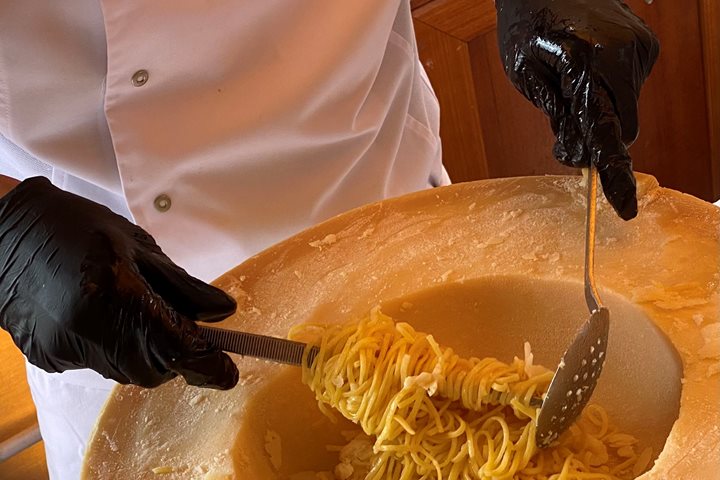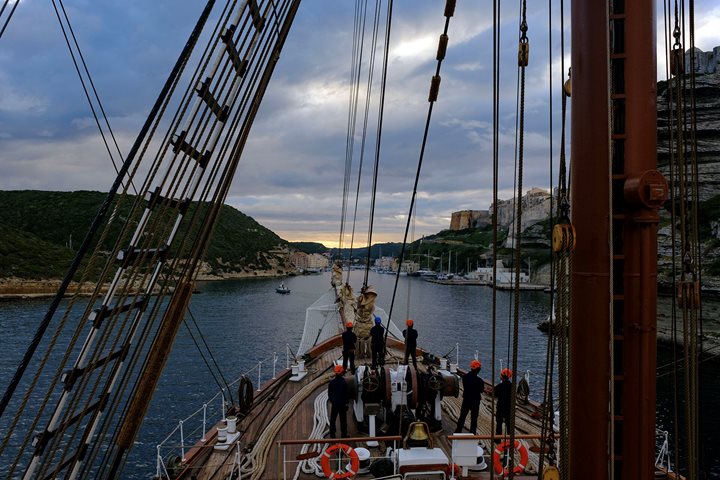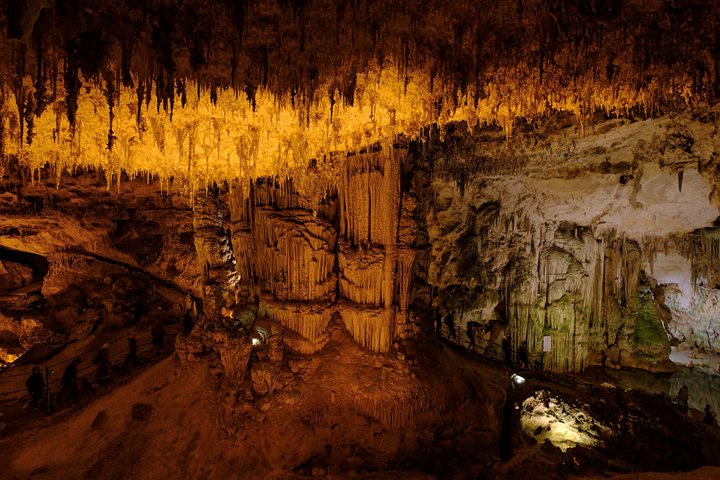Sea Cloud docked around 7:00 a.m. at the marina in “La Ciutat,” the capital of Mallorca. The prosperity of locals and visitors was clear in an instant as I looked around the marina, as substantial yachts surrounded us. Mallorca is the largest of Spain’s Balearic Islands. The etymology of the name of the island chain is unclear. Some see it as possibly having a Phoenician origin because of the first syllable “Bal,” which is the name of the principle male deity of the Carthaginians. Despite the vexed etymology, what is clear is that the islands have been inhabited for millennia and are beautiful. Long before recorded history beginning with the Carthaginians, Neolithic peoples left behind their stone structures on the islands. Today, this prosperous city boasts a population of half a million.
We left on our tour of the city at 9:00 a.m. and walked a short distance from our coach to the wonderful market. Our visit started in the fish market. It had the most incredible arrangement of fresh fish I have ever seen – all the colors of the rainbow, including bright reds, pinks, greens, and blacks. It was spotless, and there was hardly any smell. We then walked into the vegetable and cured meat area. There, an enterprising merchant treated us all to some wonderful, sliced Iberian “black pig (Porc Negra)” ham. Judging from the responses, all loved it. Our visit concluded with a light tapas luncheon at the Cristal Café. The food and wine were scrumptious. I was struck by the most beautiful Murano glass chandeliers which appeared to be antiques. The glass had a subtle green shade in places. We returned to the port and found all three Sea Clouds berthed in a line, with the original Sea Cloud first, of course! We then had a light lunch, as we had just returned from eating.
This afternoon, we had a fine visit to the great Gothic cathedral of La Palma dedicated to the Virgin Mary. It is one of the largest Gothic cathedrals in the world. Construction began in 1386 and was not completed until 1601. It has three naves and eight side altars off the north and south naves. The main altar was redone between 1901 and 1924 by Antoni Gaudi. Our guide suggested it looked a bit like Christmas decorations, and I am inclined to agree. The cathedral treasury contained some fantastic liturgical pieces, including two candelabras of solid silver that were over six feet tall and weighed 500 pounds. They were covered with elaborate, sculptural designs. We then had a lovely walk through the very fine old historic center and saw the ancient Jewish ghetto. Today, flats in this section are highly sought and very expensive. We passed two remarkable Art Nouveau buildings, the Can Casasayas and the Pensión Mmenorquina, built in 1890 and 1911. We had free time for shopping and exploring and then made our final visit to the Bellver Castle (built ca. 1310). The castle is 100 meters above the city and was originally a defensive fort. The interior of the castle forms a perfect circle and contains two public levels. The lower level’s perimeter is designed with Romanesque arches and the upper with Gothic. The views of Palma and the marina from the top were breathtaking.









